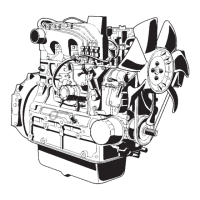What to do if Kubota D1703-M-E Engine has lack of fuel?
- JJohn YoungSep 6, 2025
If the Kubota Engine is experiencing a lack of fuel, check the fuel tank and refill if necessary. Also, inspect the fuel system for air or leaks.

What to do if Kubota D1703-M-E Engine has lack of fuel?
If the Kubota Engine is experiencing a lack of fuel, check the fuel tank and refill if necessary. Also, inspect the fuel system for air or leaks.
How to remove thick carbon deposits on Kubota D1703-M-E Engine injection nozzle?
If the Kubota Engine has thick carbon deposits on the orifice of the injection nozzle because water or dirt is mixed in the fuel, clean the nozzle injection piece, being careful not to damage the orifice. Check to see if the nozzle is working properly. If not, install a new nozzle.
How to clean carbon around Kubota D1703-M-E Engine nozzle piece?
If the Kubota Engine has carbon stuck around the orifice of the nozzle piece, clean the orifice and needle valve, being very careful not to damage the nozzle orifice. Then, check the nozzle to see if it is in good condition. If not, replace it with new parts.
Why does Kubota D1703-M-E Engine oil become thick in cold weather?
If the Kubota Engine oil becomes thick in cold weather and the engine cranks slowly, change the grade of oil according to the weather (temperature).
| Engine Model | D1703-M-E |
|---|---|
| Manufacturer | Kubota |
| Cylinders | 3 |
| Fuel System | Direct injection |
| Starting System | Electric starter |
| Type | Vertical, water-cooled 4-cycle diesel engine |
| Aspiration | Natural aspiration |
| Lubrication System | Forced lubrication |
| Rotation | Counterclockwise (viewed from flywheel side) |
Explains safety alert symbols and their meanings for safe operation.
Read manual, learn safe operation, explain to others, avoid unauthorized modifications.
Avoid loose clothing, use safety items, do not operate under influence of alcohol/drugs or while fatigued.
Check engine before operation, keep guards in place, ensure safe distance, do not allow children/livestock near, avoid shorting starter terminals.
Stop engine before refueling/lubricating, no smoking/sparks, refuel in ventilated area, do not mix fuels.
Run engine in ventilated area, prevent fire from hot exhaust gas, check for leaks of flammables, check power cables.
Relieve pressure before disconnecting, do not check for leaks with hand, use cardboard to find leaks, seek medical attention if injured.
Be alert for hot components, do not remove radiator cap when hot, handle battery safely to avoid explosion.
Stop engine before checking rotating parts, keep clear, ensure safety guards are attached.
Perform checks/maintenance on level ground, detach battery, use correct tools, rotate engine correctly, check hoses/pipes, keep first aid/fire extinguisher handy.
Instructions on how to keep, clean, and replace warning and caution labels.
Change oil and filter after first 50 hours, warm up in low temperature.
Check engine condition before starting to prevent trouble.
Step-by-step guide to start the engine under normal conditions.
Procedure for starting the engine in cold weather conditions.
Steps to properly stop the engine after operation.
Checks to perform while the engine is running (coolant, oil pressure lamp).
Information on fuel handling, color of exhaust, and immediate stop conditions.
How to identify and remedy reversed engine operation.
Table detailing maintenance tasks and their recommended intervals.
Details engine oil change intervals, quantities, and lubricating oil recommendations.
Covers fuel properties, handling, checks, and air bleeding procedures.
Checking fuel pipes, cleaning fuel filter pot, and replacing fuel filter cartridge.
Steps for checking, adding, and changing engine oil and replacing the oil filter.
Procedures for checking, adding, and changing coolant, plus remedies for leaks and overheating precautions.
Instructions for servicing the air cleaner, including evacuator valve and dust indicator.
Safety precautions and procedures for handling and charging batteries.
Safety precautions for carrying the engine.
Procedures and precautions for storing the engine.
Identifies causes and countermeasures for engine starting issues.
Identifies causes and countermeasures for reduced engine output.
Identifies causes and countermeasures for the engine stopping unexpectedly.
Identifies causes and countermeasures for abnormal exhaust colors.
Identifies causes and countermeasures for engine overheating.